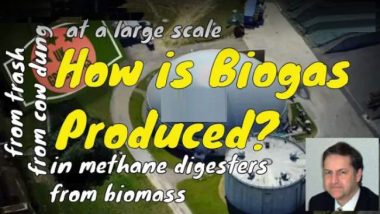Wikipedia Referenced Article in “Food Waste in the United Kingdom”.ᅠArticle Originally Published 10 February 2009.ᅠ
The amount of food waste being disposed of is lower than originally thought, according to the Waste and Resource Action Programme (WRAP).
The organisation's Chris Mills explained that less food waste is being generated than was expected, in a report at “letsrecycle.com”.
He told a conference for the Association of Organics Recycling: “The 140 kilograms average gives us a 62 per cent capture rate for food waste. We said we were collecting five kilograms per household, and we are finding the actual figure is closer to 3.8 kilograms.”
Figures from WRAP revealed different levels of success in collecting food waste.
The most efficient measure was separate collections of food waste, followed by mixed green and food waste on a weekly basis. Mixed fortnightly collection performed the worst.
Mr Mills said: “Combined collections are not going to achieve high levels of diversion, with only 0.5 kilograms or 30 kilograms collected per household per year.”
Meanwhile, the Environment Agency has demanded that waste disposal authorities provide details of the final destination of their waste.
– – – END OF WIKIPEDIA REFERENCED ARTICLE – – –
Original publisher was http://www.energysavingtrust.org.uk/ Energy Saving Trust
This page is a transposition of an article which was originally published on the “Letsrecycle” web site, no longer available, and repeated on the Energy Saving Trust's website.
It was flagged as a broken link in the references section of the Food Waste in the United Kingdom page in Wikipedia (En), so we ran searches for other copies, and one was discovered, but that page was found to have been only partially active (from a feed), and was displaying with disjointed and poorly formatted text. The meaning of the content on this page is as the original although the grammar has in parts been corrected, and other wording may differ slightly from the original.
ᅠ
Food Waste Disposals: Understanding UK Local Authority Waste Data Tracking
Food Waste Disposals refer to the systematic recording and reporting of food waste volumes handled by local authorities across the United Kingdom. This dataset tracks the monthly tonnage of food waste collected and processed through municipal waste management systems.
The data provides crucial insights into household and commercial food waste patterns, helping local authorities monitor disposal trends and plan waste management resources effectively. Local councils typically collect this information through weighbridge recordings at waste transfer stations and processing facilities, documenting both separately collected food waste and food waste mixed with general refuse.
These records form part of the broader waste management reporting requirements for local authorities and contribute to national statistics on waste disposal. The data helps measure progress toward waste reduction targets and informs policy decisions around food waste initiatives. It also enables authorities to assess the effectiveness of food waste collection services and recycling programs, while providing transparency about waste management practices to the public.
Key metrics within these records typically include:
- Monthly tonnage of separately collected household food waste
- Food waste from commercial premises (where collected by local authorities)
- Seasonal variations in food waste volumes
- Year-on-year comparisons of disposal rates
Local Authority Recording Requirements Under Simpler Recycling: Enhanced Food Waste Data Monitoring
The Enhanced Waste Data Requirements (EWDR) under Defra's Simpler Recycling reforms will come into effect in April 2025. They will significantly expand local authorities' obligations for food waste data collection and reporting. While the core elements of tonnage recording will remain, the new framework introduces more granular data requirements aimed at providing deeper insights into waste management effectiveness and supporting the government's environmental targets.
This represents a significant shift from previous reporting requirements, reflecting the government's commitment to improving waste management transparency and effectiveness across England. The enhanced data will provide valuable insights for both operational optimization and policy development, though it places additional administrative burden on local authority waste teams.
[Updated 26 November 2014, and December 2024.]



